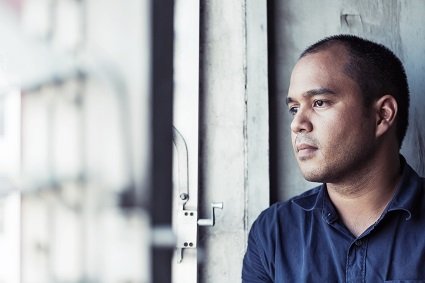
Summer 2020
Coping with Social Isolation & Loneliness During COVID-19: Strategies from Two Military & Veteran Health Researchers
Natalie Golaszewski, PhD✉; Military and Veterans Health SIG

For many of us, COVID-19 has brought upon the experience of social isolation and feelings of loneliness. These experiences and feelings are often common among Veterans, Active Military Service members and their families during deployments, relocations, and reintegration. By definition, social isolation is the quantifiable measure of social interactions and relationships, whereas loneliness is the perceived level of social isolation (Masi et al., 2011). Drs. Sara Kinztle and Alan Teo provide insight into their research on social connection and social isolation, as well as coping strategies used in practice among Veterans, active military and their families.
Dr. Kintzle’s research focuses on social connectedness among Veterans. Her work has shown that transitions for Veterans often come with feelings of disconnectedness, where individuals are searching for connection and sense of belonging to a community (Castro & Kintzle, 2016; Kintzle et al., 2018). Her community efforts with the Los Angeles Veteran Orientation (LAVO) provides opportunities for recently transitioned Veterans or Veterans new to LA to connect to a community, that includes a shared military identity, and feelings of mutual trust. Dr. Kinztle believes that it is the shared experience that allows people to connect and build communities. She points out that this is also demonstrated in spouses, partners, and families of military service members as they have a long-established tradition of strong communities and shared group identity (Huebner et al., 2009). Part of this group identity includes reaching out and helping others during deployments, relocating, and/or transitions.
- Strategy: We can emulate these efforts to build stronger communities by sharing and listening to each other’s stories, whether COVID-19 related or not, will provide opportunities for us to develop quality connections.
- Strategy: While physical distancing is still in place, there are also opportunities for us to connect in virtual communities (e.g., related to hobbies, life transitions, book clubs).
Dr. Alan Teo examines social isolation and loneliness among Veterans, as well as developing and implementing coping strategies. Based on his research and practice in the field, he suggests using a range of high-tech, low-tech, and no-tech approaches to enhance our social connections. For many active military service members and Veterans who have relocated far from loved ones, meeting in-person may not be feasible. He recommends video calls as the next best thing, as they provide an immersive experience more so than exchanging text messages, and perhaps that is why people show more evidence of deep bonds after video chats (Sherman et al., 2013; Teo et al., 2019). However, there is also a benefit for using low-tech or no-tech as recent research in military personnel has shown that sending caring messages through text messages reduces suicidal ideation and attempts (Comtois et al., 2019). Dr. Teo also recommended mixing technologies and methods of connecting to others, but also suggests/recommends social-distance-face-to-face interactions when and if possible. He shared that he enjoys seeing “sidewalk socials,” where neighbors stay physically separated (at least 6 ft), each sitting in their respective patio furniture, but still able to socialize – how creative! His research shows a dose-dependent relationship between the frequency of time spent together in-person and reductions in depression years later (Teo et al., 2015). Lastly, Dr. Teo noted that a long line of research has shown that the quality of our social connections is critical, not so much the quantity of our interactions.
- Strategy: Try using a range of high-tech (e.g., video chatting), low-tech (e.g., sending caring text messages), and no-tech (e.g., handwritten postcards) ways to connect with family and friends.
- Strategy: Monitor how you feel after a virtual meetup, and use your emotional response to guide whether to keep doing them. If scheduling a video chat with loved ones ends up feeling more like work than fun, try other avenues to connect.
Many thanks to Drs. Kinztle (University of Southern California) and Teo (VA Portland Health Care System; Oregon Health & Science University) for taking the time to contribute to this article.
References
- Castro, C. A., & Kintzle, S. (2016). Military matters: The military transition theory: Rejoining civilian life. International Society for Traumatic Stress Studies.
- Comtois, K. A., Kerbrat, A. H., DeCou, C. R., Atkins, D. C., Majeres, J. J., Baker, J. C., & Ries, R. K. (2019). Effect of Augmenting Standard Care for Military Personnel With Brief Caring Text Messages for Suicide Prevention: A Randomized Clinical Trial. JAMA Psychiatry, 76(5), 474. https://doi.org/10.1001/jamapsychiatry.2018.4530
- Huebner, A. J., Mancini, J. A., Bowen, G. L., & Orthner, D. K. (2009). Shadowed by War: Building Community Capacity to Support Military Families. Family Relations, 58(2), 216–228. https://doi.org/10.1111/j.1741-3729.2008.00548.x
- Kintzle, S., Barr, N., Corletto, G., & Castro, C. A. (2018). PTSD in U.S. Veterans: The Role of Social Connectedness, Combat Experience and Discharge. Healthcare, 6(3), 102. https://doi.org/10.3390/healthcare6030102
- Masi, C. M., Chen, H.-Y., Hawkley, L. C., & Cacioppo, J. T. (2011). A Meta-Analysis of Interventions to Reduce Loneliness. Personality and Social Psychology Review : An Official Journal of the Society for Personality and Social Psychology, Inc, 15(3). https://doi.org/10.1177/1088868310377394
- Sherman, L. E., Michikyan, M., & Greenfield, P. M. (2013). The effects of text, audio, video, and in-person communication on bonding between friends. Cyberpsychology: Journal of Psychosocial Research on Cyberspace, 7(2), Article 2. https://doi.org/10.5817/CP2013-2-3
- Teo, A. R., Choi, H., Andrea, S. B., Valenstein, M., Newsom, J. T., Dobscha, S. K., & Zivin, K. (2015). Does Mode of Contact with Different Types of Social Relationships Predict Depression in Older Adults? Evidence from a Nationally Representative Survey. Journal of the American Geriatrics Society, 63(10), 2014–2022. https://doi.org/10.1111/jgs.13667
- Teo, A. R., Markwardt, S., & Hinton, L. (2019). Using Skype to Beat the Blues: Longitudinal Data from a National Representative Sample. The American journal of geriatric psychiatry : official journal of the American Association for Geriatric Psychiatry, 27(3), 254–262. https://doi.org/10.1016/j.jagp.2018.10.014